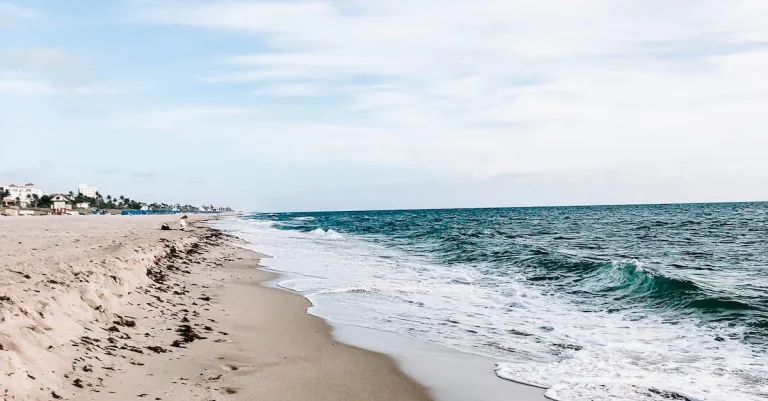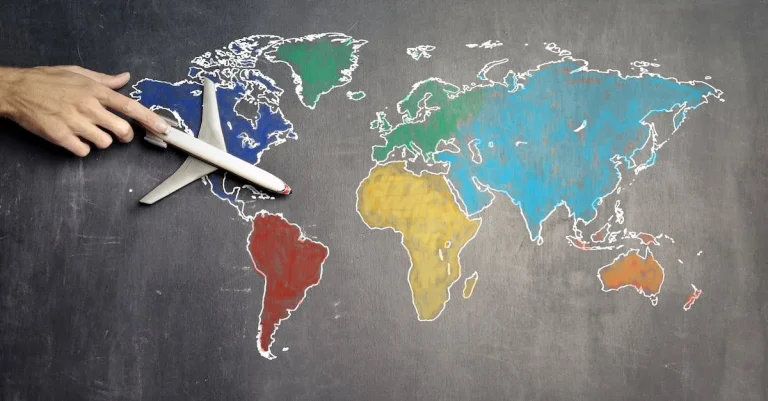How Often Does Miami Get Hit By Hurricanes?
As a major coastal city in Florida, Miami is no stranger to the devastating impacts of hurricanes. But just how often does the Magic City actually get hit by these monster storms?
If you’re short on time, here’s a quick answer: On average, a hurricane directly impacts Miami every 6 to 8 years.
In this comprehensive guide, we’ll look at historical hurricane data to analyze just how often hurricanes have made direct landfall in Miami over the past century. You’ll learn how often different categories of hurricanes (tropical storms, Category 1-5) have hit Miami. We’ll also look at the worst hurricane seasons and the most damaging storms Miami has faced. You’ll find the frequency of hurricane threats in Miami compared to other Florida cities. Finally, we’ll discuss how climate change may be impacting hurricane patterns going forward.
Hurricane Frequency in Miami Over the Past Century
Miami, Florida is known for its beautiful beaches, vibrant culture, and unfortunately, its vulnerability to hurricanes. Located in a region prone to these powerful storms, Miami has experienced its fair share of hurricane hits over the years.
Understanding the frequency of hurricanes in Miami is crucial for residents and policymakers alike, as it helps in planning and implementing effective disaster preparedness measures.
Average number of years between direct hurricane hits
One of the key factors in assessing hurricane frequency is the average number of years between direct hurricane hits. According to historical data, Miami has been directly impacted by a hurricane approximately once every six years.
This means that on average, residents can expect a direct hit from a hurricane every six years. However, it’s important to note that this is an average and does not necessarily guarantee a hurricane-free period for six years.
Breakdown by Saffir-Simpson category
When analyzing hurricane frequency, it’s also essential to consider the breakdown of hurricanes by the Saffir-Simpson category. The Saffir-Simpson scale categorizes hurricanes based on their maximum sustained wind speeds and provides an indication of their potential for damage.
In Miami, the most common category of hurricanes is Category 1, followed by Category 2. These hurricanes typically bring strong winds, heavy rainfall, and the potential for flooding.
However, Miami has also experienced hurricanes of higher categories, such as Category 3 and above. These hurricanes pose an even greater threat to life and property and require heightened preparedness and evacuation measures.
It’s crucial for residents to stay informed about the category of an approaching hurricane and follow the guidance of local authorities to ensure their safety.
Analysis of worst hurricane seasons
Over the past century, Miami has endured several devastating hurricane seasons. One such season was in 1992 when Hurricane Andrew, a Category 5 hurricane, struck the city. The impact of Hurricane Andrew was catastrophic, causing extensive damage to homes, infrastructure, and the economy.
It serves as a stark reminder of the destructive power of hurricanes and the need for preparedness.
Another notable hurricane season in Miami’s history was in 2005. This season saw an unprecedented number of hurricanes, including Hurricane Katrina, Hurricane Rita, and Hurricane Wilma. The cumulative effects of these storms resulted in significant damage and loss of life.
The 2005 hurricane season serves as a reminder that multiple hurricanes can impact a region within a short period, underscoring the importance of being prepared for such scenarios.
It’s worth mentioning that the frequency and intensity of hurricanes can vary from year to year, depending on various climatic factors. Monitoring and analyzing historical hurricane data can provide valuable insights into the patterns and trends in hurricane activity, helping researchers and meteorologists better understand and predict future hurricane behavior.
For more information on hurricanes and their frequency in Miami, you can visit the official website of the National Hurricane Center. Their website provides up-to-date information, forecasts, and resources to help individuals and communities stay prepared for hurricane events.
Miami’s Most Damaging Hurricanes
Great Miami Hurricane (1926)
The Great Miami Hurricane of 1926 is considered one of the most devastating hurricanes to ever hit Miami. It made landfall on September 18, 1926, with winds reaching up to 145 miles per hour. The hurricane caused widespread destruction, with an estimated $105 million in damages (equivalent to over $1.5 billion today).
The storm surge caused significant flooding, and many buildings were completely destroyed. The Great Miami Hurricane serves as a reminder of the destructive power of hurricanes and the importance of preparedness.
Hurricane Andrew (1992)
Hurricane Andrew is another hurricane that left a lasting impact on Miami. It struck on August 24, 1992, with winds of up to 165 miles per hour. The storm caused widespread devastation, destroying more than 25,000 homes and damaging over 100,000 others.
The total damages were estimated to be around $26.5 billion (equivalent to over $50 billion today). Hurricane Andrew prompted significant changes in building codes and disaster preparedness measures to ensure better protection against future storms.
Hurricane Irma (2017)
In 2017, Miami experienced the wrath of Hurricane Irma, one of the most powerful hurricanes ever recorded in the Atlantic. Although Miami was not directly hit by the eye of the storm, it still suffered significant impacts.
The hurricane brought strong winds and heavy rainfall, causing widespread power outages and flooding in many areas. The damages from Hurricane Irma were estimated to be around $50 billion, making it one of the costliest hurricanes in U.S. history.
These hurricanes serve as reminders of the vulnerability of coastal regions like Miami to the devastating effects of hurricanes. It is crucial for residents to stay informed, have a plan in place, and follow evacuation orders when necessary to ensure their safety.
The National Hurricane Center (NHC) provides valuable information and updates on hurricanes, helping individuals and communities prepare for these powerful storms. For more information, visit www.nhc.noaa.gov.
How Miami Compares to Other Florida Cities
When it comes to hurricanes, Miami is often the first city that comes to mind. Its location in South Florida puts it directly in the path of many tropical storms that form in the Atlantic. However, it’s important to note that Miami is not the only city in Florida that experiences the wrath of hurricanes.
Let’s take a look at how Miami compares to other major cities in the state.
Tampa
Tampa, located on the west coast of Florida, is no stranger to hurricanes. While it may not get hit as frequently as Miami, it still experiences its fair share of storms. In fact, Tampa has been hit by several major hurricanes in the past, including Hurricane Irma in 2017.
The city’s proximity to the Gulf of Mexico makes it susceptible to storms that form in that area.
Orlando
Orlando, known for its theme parks and tourist attractions, is located inland and slightly north of Miami. While it may not be directly on the coast, Orlando is still affected by hurricanes that make their way inland.
These storms can bring heavy rainfall, strong winds, and even tornadoes to the area. It’s important for residents and visitors alike to stay informed and prepared during hurricane season.
Jacksonville
Jacksonville, the largest city by land area in the contiguous United States, is located in the northeastern part of Florida. While it may be farther from the most active hurricane zones, it is not immune to their impact.
Jacksonville has experienced hurricanes in the past, such as Hurricane Matthew in 2016. The city’s coastline is vulnerable to storm surge and flooding during these events.
Rest of Florida coastline
Along the rest of Florida’s coastline, cities such as Miami, Tampa, Orlando, and Jacksonville are not the only ones affected by hurricanes. From the Panhandle down to the Florida Keys, numerous coastal communities face the threat of hurricanes each year.
These cities, towns, and villages must be prepared for the possibility of evacuation, property damage, and power outages during these storms.
Projected Impacts of Climate Change
Increasing hurricane intensity
One of the projected impacts of climate change on Miami is the increasing intensity of hurricanes. As global temperatures rise, the energy available for hurricanes to form and strengthen also increases.
According to the National Oceanic and Atmospheric Administration (NOAA), climate change is expected to result in more intense hurricanes in the future. This means that Miami could experience more frequent and severe storms, with higher wind speeds and heavier rainfall.
Scientists have observed a trend of increased hurricane intensity in recent years. In fact, the Atlantic hurricane season of 2020 was one of the most active on record, with a total of 30 named storms. This includes 13 hurricanes, 6 of which were major hurricanes (Category 3 or higher).
These numbers highlight the growing threat that hurricanes pose to coastal areas like Miami.
Rising sea levels worsening storm surge
Another significant impact of climate change on Miami is the rising sea levels, which can worsen the effects of storm surge during hurricanes. Storm surge occurs when strong winds push water towards the shore, causing a temporary rise in sea level.
With higher sea levels, storm surge can reach further inland and cause more extensive flooding.
The Intergovernmental Panel on Climate Change (IPCC) predicts that global sea levels could rise by up to 1 meter by the end of the century. This would have a profound impact on coastal cities like Miami, where even a small increase in sea level can lead to significant flooding during hurricanes.
According to a study published in the journal Scientific Reports, Miami is already experiencing an increase in the frequency of nuisance flooding events due to rising sea levels. These events, which cause minor flooding in low-lying areas, have become more common in recent years and are likely to worsen in the future.
Conclusion
Based on historical data, Miami gets a direct hit from a hurricane about once every 6 to 8 years on average. Some decades see multiple storms, while other periods may go 10-20 years without a direct hit.
While Tampa and other Florida cities also see hurricane threats, Miami’s location, coastal exposure, and low elevation make it uniquely vulnerable to tropical cyclones. As climate change drives sea level rise and potentially increases hurricane intensity, Miami is likely to face even greater hurricane risks in the future.
By understanding Miami’s historical hurricane frequency and projected changes, residents and city planners can better prepare for these devastating storms.








